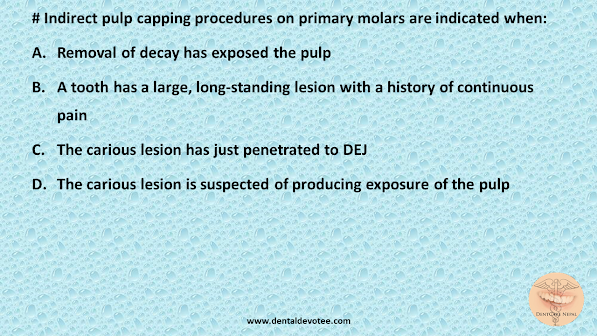# In performing mandibular nerve block for a child, the most probable cause of failure of anesthesia is:
A. More concentration of LA is required
B. Because of different angulation of needle
C. Because of position of mandibular foramen
D. None of the above
The correct answer is C. Because of position of mandibular foramen.
Olsen reported that the mandibular foramen is situated at a level lower than the occlusal plane of the primary teeth of the pediatric patient. Therefore the injection must be made slightly lower and more posteriorly than for an adult patient.
Reference: McDONALD AND AVERY’S DENTISTRY FOR THE CHILD AND
ADOLESCENT, TENTH EDITION, Page no 275







